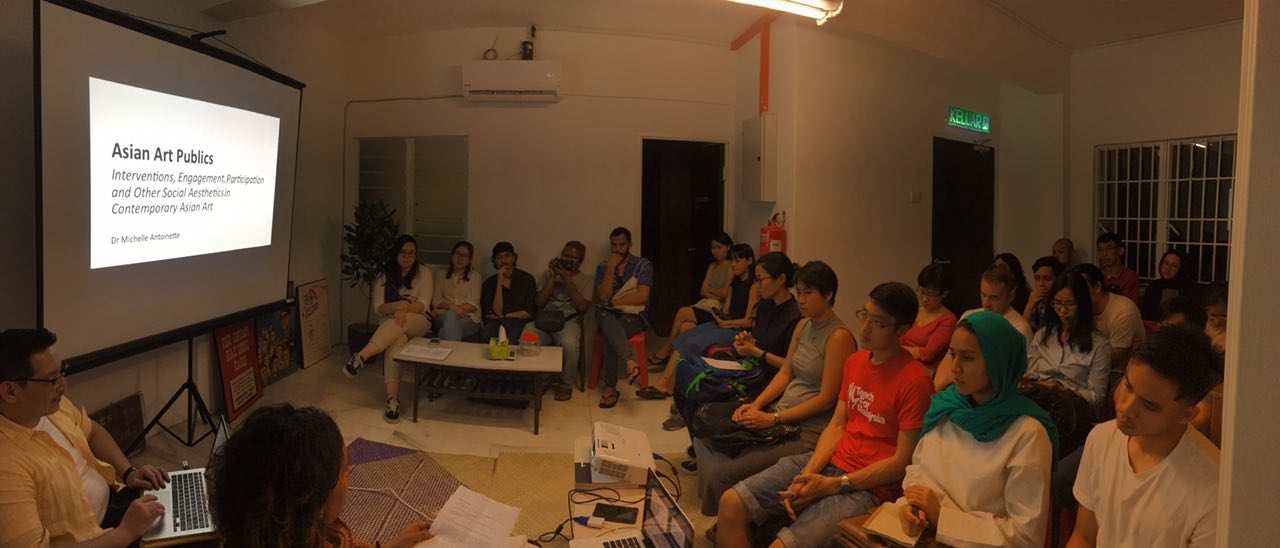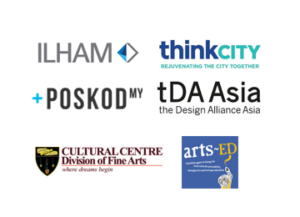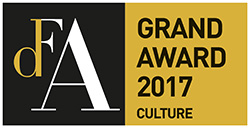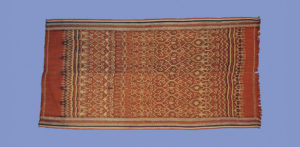Asian Art Publics: Interventions, Engagement, Participation and Other Social Aesthetics in Contemporary Asian Art
by Dr. Michelle Antoinette (Australia National University)

How does contemporary art function in the public realm in Asia today? What is the contribution of contemporary art to shaping Asia’s public spheres? This talk considers such questions in view of intensified public roles for, and public significance of art, artists and art audiences in contemporary Asia, and an unprecedented visibility and awareness of contemporary Asian art within the mainstreams of Asian public culture. This larger context of enquiry forms the backdrop for my focused discussion of a contemporary art project initiated in Hong Kong in 2014 which highlights interventions into, and collision of, different publics via art, as well as the possibilities of art to help redefine public spheres in Asia through acts of intervention, engagement, relation, participation, and other socially-oriented aesthetics.
and
Performing the Alimentary: The Aesthetics and Politics of Food in Contemporary Asian Art
by Dr. Francis Maravillas (University of Technology Sydney)
In the early 1990s, pad Thai made its celebrated appearance on the international stage of contemporary art, featuring as le plat du jour in the performance installations of Thai artist Rirkrit Tiravanija, for which the dish was cooked and served in makeshift, semi-official exhibition spaces or architectural ‘non-spaces’ of various galleries. His cooking performances, however, were less about food as substance and sensuous materiality (such as the amber sheen, fulsome flavour and unmistakably aromatic quality of pad Thai) than occasions aiming to prompt— via the forms of sociality and conviviality they conjure — reflection on a series of displacements: the displacement of the sites of art-making, of the identity of the artist and the public, and of the locations in which art is staged and encountered.
Significantly, the revival of the alimentary in contemporary art has coincided with a heightened awareness of the relational dynamics of art and its capacity to engender forms of participation, dialogue and social engagement. This talk seeks to reconsider the idea of ‘relationality’ in art through a critical survey of the significance and various uses of food in contemporary Asian art. In particular, it offers an analysis of the use of food in the recent performance work of Indonesian artists Mella Jaarsma, Agung Kurniawan and Elia Nurvista, and argues for the need to be attuned to the specificities of local histories and geographies in order to fully grasp the performative, relational and sensuous processes of the alimentary in art, its relation to the everyday and its entanglement in the political economy of survival in a globalising world.
About the speakers
Dr Michelle Antoinette is a researcher of modern and contemporary Asian art, currently based at the Australian National University (ANU) in the Centre for Art History & Art Theory. From 2017, she is researching new public participation in Asian art and museums, supported by an Australian Research Council (ARC) award (DE170100455). She was an ARC Postdoctoral Fellow at ANU from 2010–13, researching the growth of regional and international networks of contemporary Asian art and museums. She has been Convenor and Lecturer at ANU for courses on Asian and Pacific art and museums. Her previous and ongoing research focuses on the contemporary art histories of Southeast Asia on which she has published widely. She is author of Reworlding Art History: Encounters with Contemporary Southeast Asian Art after 1990 (2015) and co-editor, with Caroline Turner, of Contemporary Asian Art and Exhibitions: Connectivities and World-making (2014).
Dr Francis Maravillas teaches in the School of Design at the University of Technology, Sydney. His research interests focuses on contemporary art and visual culture in Asia and Australia, curatorial practice, socially engaged and collaborative art. He is currently writing a book on the significance and various uses of food in contemporary Asian art. He has published articles and book chapters on the Asia-Pacific Triennial exhibition series, Asian artists in the diaspora in Australia, and food and hospitality in contemporary Asian art. He is area editor (Asia-Pacific) of the Asian Diasporic Visual Cultures and the Americas journal. He was previously a board member of the 4A Centre for Contemporary Asian Art, Sydney (2004-2007).
–
Thank you to our wonderful Australian colleagues Michelle Antoinette (Australia National Universtiy/ Monash University) and Francis Maravillas (University Technology Sydney) for spending the evening with us. Michelle kicked off the evening by looking at numerous artworks that have privileged ‘the social’ as an aesthetic framework in recent artistic practices shown in museums across Asia. Often these kinds of work are not ‘art objects’ per se. The artworks are more like staged situations so that conversations, encounters, collaborations could take place. She called for a more attentive reading to these artworks in relation to context, and closely analysed Indonesian-born Melbourne-based artist Tintin Wulia’s video documentation and installation exploring Filipino domestic workers’ use of public spaces in Hong Kong as an example. The question raised was whether the issues explored in that art project successfully translates into a white-cube or exhibition space context – particularly in a commercial art fair environment, in which the discussed artwork was also shown.
Michelle’s presentation was followed by Francis Maravillas, who used the ‘alimentary’ or a concept of nourishment and sustenance as a way to understand contemporary Asian art that has food as a subject or uses food to create social interactions and conversations about specific issues. Francis Maravillas pointed out that artists were not only creating situations in which social harmony is celebrated, often such projects also highlighted our food culture’s entanglement in the political economy of survival in a globalising world.
We then opened the floor up for discussion and was surprised to find a really diverse group of people attending this evening’s talk, ranging from academics to artists, curators to architects, as well as food stylists! A large part of the conversation was centred around how we are able to locate the ‘aesthetic’ experience in these kinds of social practices framed as artworks – why are they not viewed as activism or political work? How can we understand them as art? Our speakers suggested that perhaps art as a thinking space allows for a certain kind of reframing of larger social issues to take place. Such reframing will make us pay attention, experience and think about issues that we normally would not. In doing so, the ‘social aesthetic’ could also be challenging the conventional norms of what art is supposed to be, as an object imbued with social/cultural and monetary value. Instead, the ‘aesthetic’ in these social practices shown as art allows for the engagement of different kinds of publics, very often people from different social classes or cultural backgrounds that are very often marginalised in public discourses.




